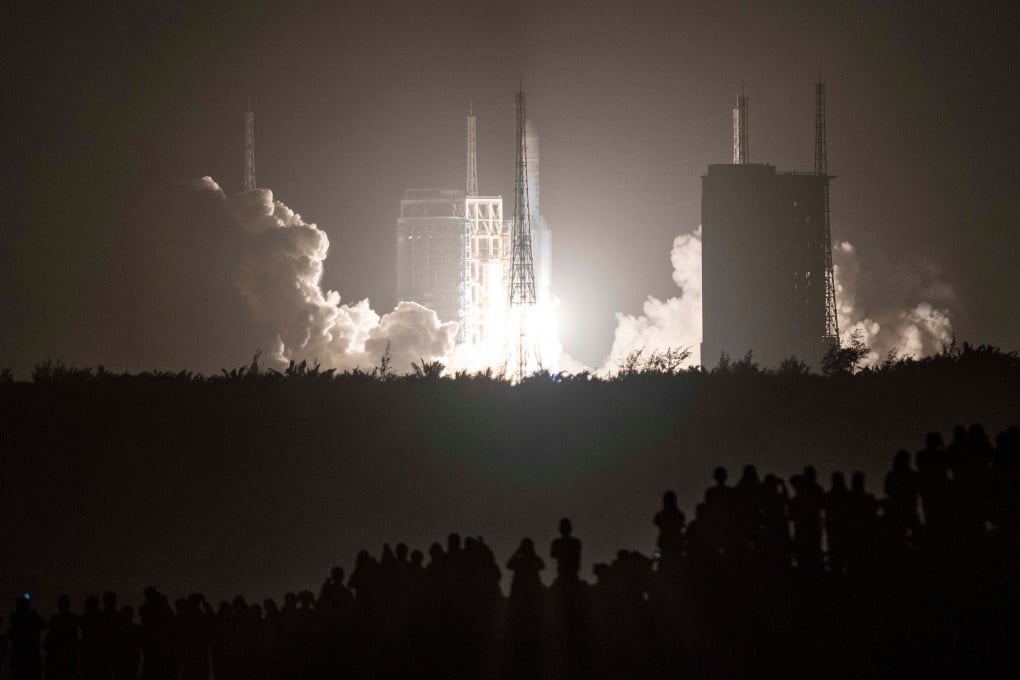Lift-off for China’s Chang’e 5: the first chance since 1976 to bring lunar samples back to Earth
- Long March 5 rocket carrying spacecraft takes off in China’s most complex mission yet
- Technology has brought the drilling and retrieval project a long way but may also bring the most difficult problems

China’s first lunar mission to bring samples back to Earth faces new technical challenges and much could go wrong, according to Chinese space authorities.
“A long journey just begins,” Pei Zhaoyu, deputy chief of the lunar programme at the China National Space Administration, said as the rocket lifted off.
The 8-tonne (8.8 ton) spacecraft comprises four independent but interactive components: one to stay in lunar orbit as a docking station; one to go down to the moon’s surface and drill for samples; one to take the material back to the dock; and one to bring the samples back to Earth.
“It is the Chinese space programme’s most complex mission ever,” Pei said on state television.
On August 23, 1976, the Soviet Luna 24 craft returned to Earth, bringing back 170 grams (6 ounces) of moon rock samples from up to 2.5 metres (8.2 feet) underground. The Luna 24 mission marked the end of the intense race between the Soviet Union and the United States to go to the moon. The last American Apollo mission ended in 1972, and the Russians ended their manned landing programme a few months before the Luna 24 launch.